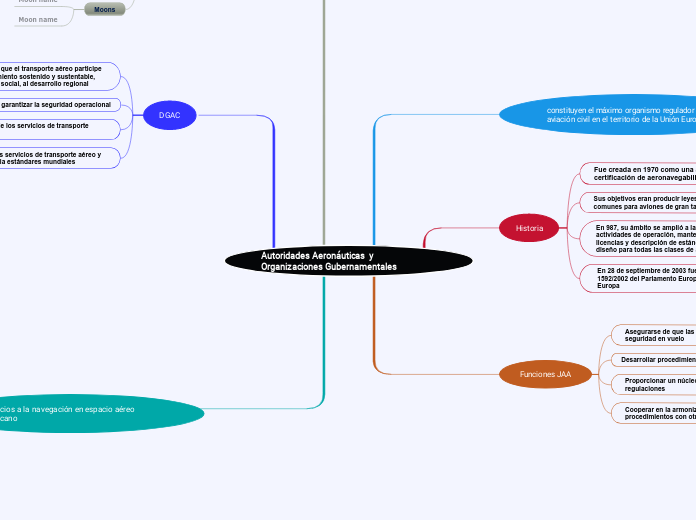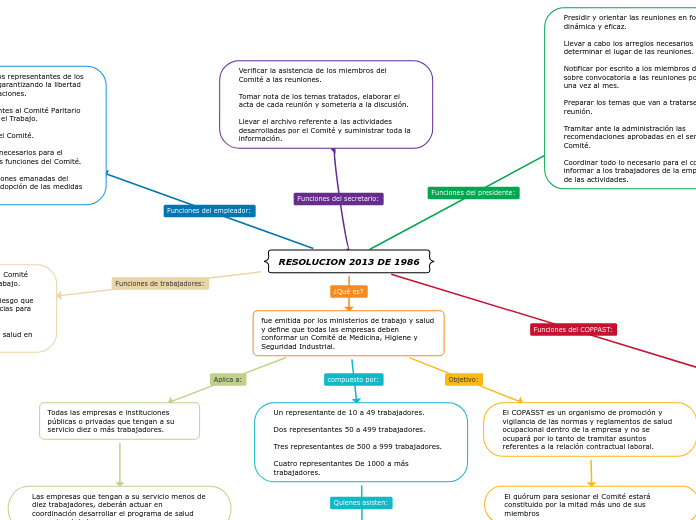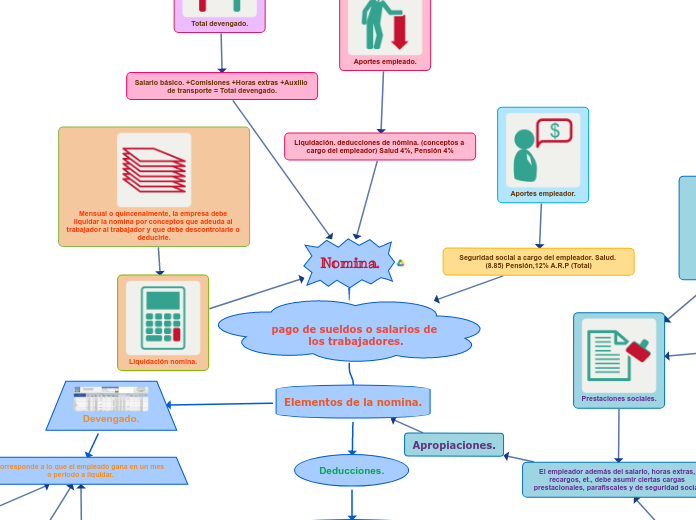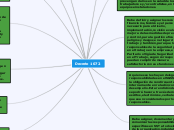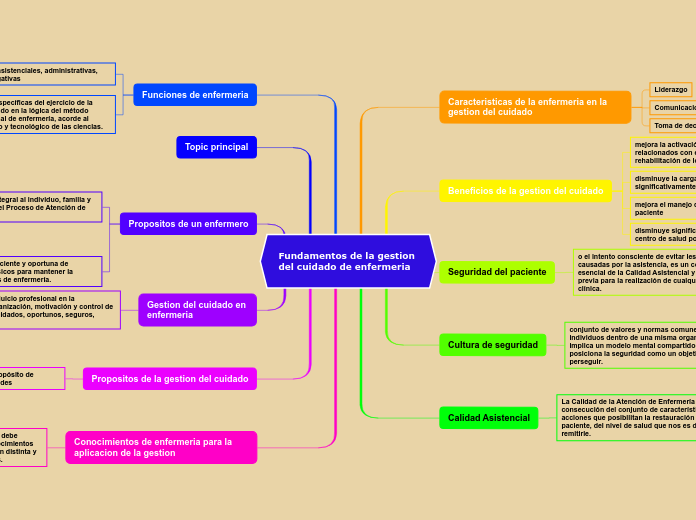Autoridades Aeronáuticas y Organizaciones Gubernamentales
The Solar System is the gravitationally bound system of the Sun and the objects that orbit it, either directly or indirectly. Of the objects that orbit the Sun directly, the largest are the eight planets, with the remainder being smaller objects, the dwarf planets, and small Solar System bodies.
Servicios a la navegación en espacio aéreo mexicano
Uranus is an oddball. It has clouds made of hydrogen sulfide, the same chemical that makes rotten eggs smell so foul.
It rotates from east to west like Venus. Its tilt causes extreme seasons that last 20-plus years, and the sun beats down on one pole or the other for 84 Earth-years at a time.
Methane in the atmosphere gives Uranus its blue-green tint. It also has 13 sets of faint rings.
Sistema Radar
funciona transmitiendo una señal y midiendo el tiempo que tarda en ir y regresar del objeto donde rebota
Servicio de Telecomunicaciones Aeronáuticas
se proporciona mediante el intercambio de mensajes relativos a la seguridad y regularidad aeronáutica, de control de tránsito aéreo, información meteorológica, planes de vuelo etc.
Servicio de Meteorología Aeronáutica
contribuye a la seguridad, puntualidad y rentabilidad de las operaciones aéreas
Servicio de Información de Vuelo (OSIV)
atiende a los pilotos de la Aviación General en la elaboración del plan de vuelo, proporcionando asesoramiento meteorológico, en donde analiza y proporciona información meteorológica alfanumérica y gráfica
Espacio Aéreo
El Espacio Superior es a partir de los 20,000 pies hacia arriba sin límite superior.
El Espacio Aéreo Inferior está comprendido entre la superficie del terreno o del agua y hasta sin incluir 20,000 pies
Este se divide mundialmente en regiones de navegación aérea
Servicios de Control de Tránsito Aéreo
A planet's day is the time it takes the planet to rotate or spin once on its axis.
Write down Uranus's day measured in Earth days.
Servicio de Control de Área.
Servicio de Aproximación
Servicio de Control de Aeródromo
funciones estratégicas encomendadas
Planear, ejecutar y controlar las inversiones en infraestructura e instalación
Administrar las instalaciones de ayuda
DGAC
Neptune is about the size of Uranus and is known for supersonic strong winds.
Neptune is far out and cold.
The planet is more than 30 times as far from the sun as Earth.
Neptune was the first planet predicted to exist by using math, before it was visually detected. Neptune is about 17 times as massive as Earth and has a rocky core.
Elevar la calidad de los servicios de transporte aéreo y su infraestructura hacia estándares mundiales
Neptune has thirteen moons that we know of and one more waiting for confirmation.
The largest moon is slightly smaller than Earth's Moon and has active volcanoes which erupt like geysers and eject nitrogen frost over the surface.
Name this moon and at least 4 others.
Ampliar la cobertura de los servicios de transporte aéreo
How long does it take for Neptune to go around the sun?
Tiene como objetivo garantizar la seguridad operacional
A planet's day is the time it takes the planet to rotate or spin once on its axis.
Write down Neptune's day measured in Earth days.
encargada de asegurar que el transporte aéreo participe en el proceso de crecimiento sostenido y sustentable, contribuya al bienestar social, al desarrollo regional
Pluto
It was once considered a planet but in August 2006 the International Astronomical Union (IAU) downgraded the status of Pluto to that of “dwarf planet.”
Pluto is unlike other planets in many respects. It is smaller than Earth's moon; its orbit is highly elliptical.
It's a cold, rocky world with a tenuous atmosphere. Pluto is a very active ice world that's covered in glaciers, mountains of ice water, icy dunes, and possibly even cryovolcanoes that erupt icy lava made of water, methane or ammonia.
Moons
The dwarf planet Pluto has five moons.
Name these moons.
Moon name
Day
A planet's day is the time it takes the planet to rotate or spin once on its axis.
Write down Pluto's day measured in Earth days.
How many Earth days
Orbit around the Sun
How long does it take for Pluto to go around the sun?
How many days
Position from the sun
Position
Funciones JAA
Jupiter is a giant gas world that is the most massive planet in our solar system.
Its swirling clouds are colorful due to different types of trace gases.
And a major feature in its swirling clouds is the Great Red Spot, a giant storm more than 10,000 miles wide. It has raged at more than 400 mph for the last 150 years, at least.
Jupiter has a strong magnetic field, and with 75 moons, it looks a bit like a miniature solar system.
Cooperar en la armonización de requisitos y procedimientos con otras autoridades reguladoras
Jupiter has a strong magnetic field, and with 75 moons, it looks a bit like a miniature solar system.
Name the 4 most known moons.
Proporcionar un núcleo de expertos europeos para las regulaciones
How long does it take for Jupiter to go around the sun?
Desarrollar procedimientos administrativos y técnicos
A planet's day is the time it takes the planet to rotate or spin once on its axis.
Write down Jupiter's day measured in Earth days.
Asegurarse de que las medidas obligatorias para la seguridad en vuelo
Historia
Mars is a cold, desert-like place covered in dust. This dust is made of iron oxides, giving the planet its iconic red hue.
Mars shares similarities with Earth: It is rocky, has mountains, valleys and canyons, and storm systems ranging from localized tornado-like dust devils to planet-engulfing dust storms.
En 28 de septiembre de 2003 fue aprobada la norma 1592/2002 del Parlamento Europeo y el Consejo de Europa
Mars has two small moons.
Name these moons.
En 987, su ámbito se amplió a la regulación de todas las actividades de operación, mantenimiento, concesión de licencias y descripción de estándares de certificación y diseño para todas las clases de aeronaves
How long does it take for Mars to go around the sun?
Sus objetivos eran producir leyes de certificación comunes para aviones de gran tamaño
A planet's day is the time it takes the planet to rotate or spin once on its axis.
Write down Mars's day measured in Earth days.
Fue creada en 1970 como una autoridad de certificación de aeronavegabilidad
Our Solar System has eight “official” planets which orbit the Sun.
Each planet is at a different distance from the sun. Name its position.
constituyen el máximo organismo regulador de la aviación civil en el territorio de la Unión Europea
Earth is a water world, with two-thirds of the planet covered by oceans.
It's the only world known to harbor life.
Earth's atmosphere is rich in nitrogen and oxygen.
Its name originates from 'Die Erde,' the German word for 'the ground.'
Earth may once have had two moons, nowadays it has just one.
